Age of Jackson
Polk's Early Years
James K. Polk was born in 1795 on the frontier in western North Carolina. When he was 11, Polk’s family moved to Columbia, Tennessee.
Polk suffered from a painful gallstone condition. He was often sick and was not as strong as many other boys his age. In 1812, his father took him to see Dr. Ephraim McDowell in Kentucky.
Dr. McDowell was renowned for his surgical skill. Polk endured an operation to correct his gallstone problem. At this time, doctors operated on patients without any anesthesia, so Polk was awake during the operation. It was successful and cured his medical condition.
Dr. McDowell was renowned for his surgical skill. Polk endured an operation to correct his gallstone problem. At this time, doctors operated on patients without any anesthesia, so Polk was awake during the operation. It was successful and cured his medical condition.
The Polks were wealthy so James attended a private school in Murfreesboro. Polk then went to the University of North Carolina at Chapel Hill. He was an excellent student, and enjoyed participating in debate clubs.
After college, Polk trained as a lawyer, but his main interest was politics. He married Sarah Childress Polk of Murfreesboro, and they settled down in Columbia.
In 1822, Polk began his political career by running for and winning a seat in the state legislature. Polk was a Jacksonian Democrat. This meant that he supported the policies of Andrew Jackson. He was also Jackson’s personal friend. Polk was called “Young Hickory” in honor of his mentor Andrew Jackson who was known as “Old Hickory.”
By 1825, Polk was ready to move to the national scene. With the help of Jackson’s friends, he was elected one of the U.S. representatives from Tennessee. During the next 14 years, Polk rose to national prominence in Washington D.C., learning to be an even better politician.
Polk was elected by his fellow congressmen as speaker of the U.S. House of Representatives in 1835. He was seen as a good strategist who used strong tactics to keep control of the House. In this way, Polk could make sure that the laws that President Andrew Jackson wanted were passed.
The presidential election of 1836 divided state Democrats as Hugh White won the majority of Tennessee votes over Jackson’s hand-picked successor, Martin Van Buren. But Van Buren won the election.
With Jackson ill, Polk became the leader of the Democratic Party in the state. He was encouraged to return to the state and run for governor. With the possibility that the Whigs could win enough seats in Congress to depose him as speaker, Polk decided to come back to Tennessee. He ran for and was elected governor in 1839.
In running for re-election in 1843, Polk came up against James Jones, whose nickname was “Lean Jimmy (he was tall and very thin). During the 1843 campaign, the two candidates would often campaign together and their combined speeches and rebuttals lasted hours.
Even though Polk failed to win this particular election, he remained a respected leader in the Tennessee Democratic Party and, as it turns out, also in the national Democratic Party.
Polk, who had been a politician for 20 years, was suddenly unemployed. He tried running his plantation, and also resumed his law practice. He wasn’t very successful at either. What Polk really wanted to do was re-enter politics.
He would have that opportunity in the presidential election of 1844.
Picture Credits:
- Portrait of James Knox Polk. This print was made sometime before 1866. It is based upon an 1830 painting by Ralph E. W. Earl. Tennessee State Library and Archive.
- Portrait of Sarah Childress Polk. This print was made sometime before 1866. It is based upon an 1830 painting by Ralph E. W. Earl. Tennessee State Library and Archive.
- Photograph of Polk Place. This photo was taken in 1892. It shows the home of Sarah and James K. Polk in Nashville near Seventh Avenue. A walkway and the Polk tomb are visible in the forefront, while the mansion can be seen in the background. In the 1890s the house was sold and later torn down after the death of Mrs. Polk, and the tombs of the President and First Lady were moved to the State Capitol. Tennessee State Library and Archives.
- Painting entitled, “Stump Speaking at Knoxville.” This painting was made in 1840 and shows Polk standing on a stage and speaking to a large group of people in a rural area. Stump speaking refers to the practice of standing on a tree stump while giving a political speech. A tree stump was used as a stage, because it provided a natural platform for candidates upon which to speak. The painting depicts a democratic meeting on July 4, 1840, where Governor James K. Polk spoke on behalf of presidential candidate Martin Van Buren. Polk also announced his decision to run for re-election as governor at the meeting, but eventually lost to James C. Jones. Tennessee State Museum Collection, 10.270.
- Drawing entitled, “Speaker of the House of Representatives US.” It shows James K. Polk standing at the Speaker’s Desk at the U. S. House of Representatives in Washington, D. C. Tennessee State Library and Archives.
Age of Jackson >> Tennessee's Presidents >> James K. Polk >> Polk's Early Years
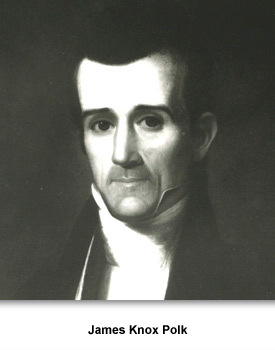
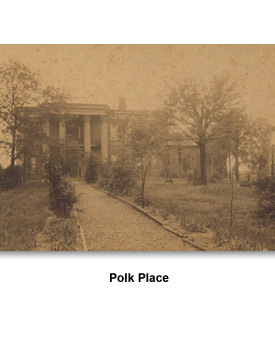
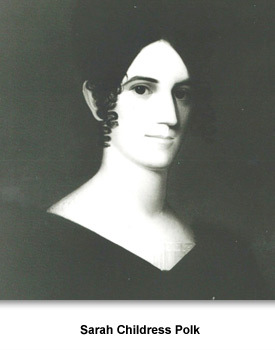
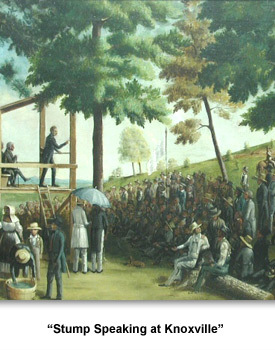
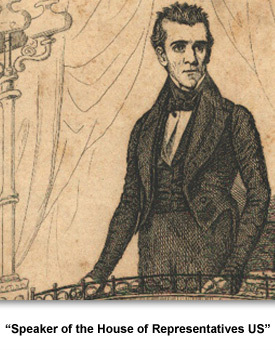
 Sponsored by: National Endowment for the Humanities
Sponsored by: National Endowment for the Humanities